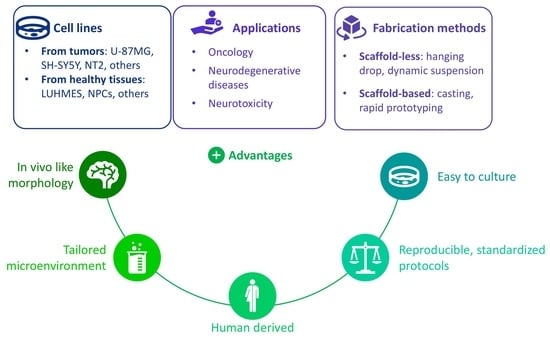Advanced 3D Models of Human Brain Tissue Using Neural Cell Lines: State-of-the-Art and Future Prospects
Abstract
Share and Cite
Fabbri, R.; Cacopardo, L.; Ahluwalia, A.; Magliaro, C. Advanced 3D Models of Human Brain Tissue Using Neural Cell Lines: State-of-the-Art and Future Prospects. Cells 2023, 12, 1181. https://doi.org/10.3390/cells12081181
Fabbri R, Cacopardo L, Ahluwalia A, Magliaro C. Advanced 3D Models of Human Brain Tissue Using Neural Cell Lines: State-of-the-Art and Future Prospects. Cells. 2023; 12(8):1181. https://doi.org/10.3390/cells12081181
Chicago/Turabian StyleFabbri, Rachele, Ludovica Cacopardo, Arti Ahluwalia, and Chiara Magliaro. 2023. "Advanced 3D Models of Human Brain Tissue Using Neural Cell Lines: State-of-the-Art and Future Prospects" Cells 12, no. 8: 1181. https://doi.org/10.3390/cells12081181
APA StyleFabbri, R., Cacopardo, L., Ahluwalia, A., & Magliaro, C. (2023). Advanced 3D Models of Human Brain Tissue Using Neural Cell Lines: State-of-the-Art and Future Prospects. Cells, 12(8), 1181. https://doi.org/10.3390/cells12081181







